Edo three major festivals are Fukagawa, Kanda and Sannou-festival,
respectively of "TomiokaHachimanguu" in Fukagawa, "KandaMyoujin" in Kanda and
"HiedaShrine" in Akasaka. Sansya-festival of Asakusa is considered appositive.
Maturi-Festival is the prayer and ritual of Shintou and
Buddhism. Matsuri has an amusement factor, however I think, Shinto and
Buddhisum among Japanese as well as our respect to Emperor might be the basis of
the stability of the society, and Matsuri from Edo Period have been the energy
and passion of religeous feeling of public and society.
江戸の三大祭りは、深川・神田・山王祭りで、それぞれ、深川の富岡八幡宮、神田
の神田明神、赤坂の日枝神社の祭祀・例祭です。浅草の三社祭りも同格の歴史ある祭り
です。
祭りは神仏への祈り・願いの儀式です。 神仏への祈り・祈願と皇室への尊敬は日本の
社会の安定の基盤ではないかと思われます。 勿論祭りは娯楽の要素もありますが、
歴史的にも真摯な宗教的心情が情熱を掻き立てるように思えます。
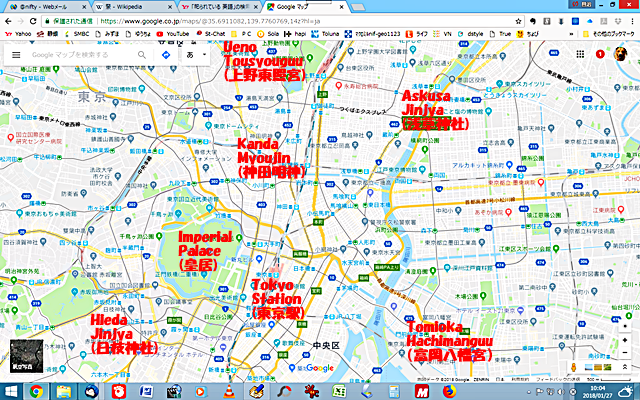
1)Fukagawa Festival
Festival of Fukagawa Tomioka Hachimanguu, carried out in August, when the sun
is so hot that people shouldering Mikoshi need to have water, causing crowd
splash them water and the festival is called "Splashing Festival".
Once every 3 years is the major festival, when the shrine's float parades
from the shrine to Hakozakicho some 70km, The record shows 54 "Mikoshi-
Portable Shrines" of each town in this area showed up in the history.
1)深川祭り
深川富岡八幡宮の祭りで毎年8月に行われ、夏の暑い盛りで、町神輿の担ぎ手に水を
掛ける”水掛け祭り”と呼ばれる。
3年に一度は八幡宮の御鳳輩が渡御を行う本祭りが催される。
本祭りのルートは八幡宮~箱崎町辺りまで約70kmで、町神輿の方は54基が出た記録もある。
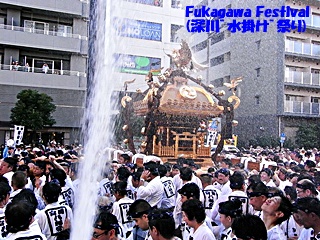
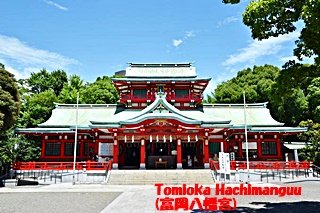
2)Sansya Festival
In May, Sansha Festival of Asakusa Shrine is held, using the old name of the
shrine, "Sansha Myoujin or Sansha Daigongen". "Binzasara Dance" since
Muromachi Period is famous as a traditional beauty.
2)三社祭り
浅草神社の祭礼で毎年5月に行われる、浅草神社の旧名”三社明神社‐三社大権現社
”の名前から三社祭りと呼ばれ、室町以来とされる”びんざさら舞”は古式に則った
ものとして有名である。
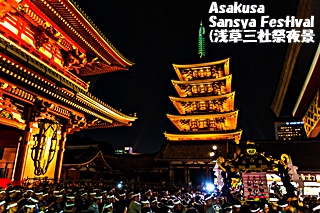
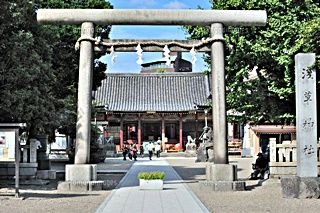
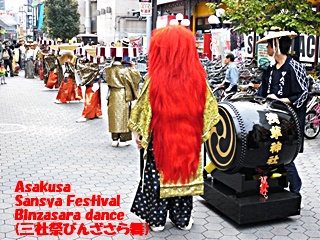
3)Kanda Festival
Festival of Kanda Myoujin (Shrine) is also carried out in May in the odd year
of Anno Domini, while in the even year has Sannou Festival though in June.
As Kanda Myoujin was the guardian of Edo, it was supported by Edo Government,
Tokugawa family, so the festival was very gorgeous having float and matrix of
people wearing ancient costume Heian Period and so forth. However now Mikoshi
of the shrine and each district are the main subject of the festival.
The Mikoshi starts the shrine in the morning moving to Nihonbashi area
accompanied by Heian custume people and shrine maiden and in the afternoon,
float and warrior matrix join to come back to the shrine. In the next day,
Mikoshi (portable shrine) of each district moves in their own area, partly
moving into the shrine.
3)神田祭
神田明神の祭りで5月に行われる。 神田明神が江戸の守護神とされ、
昔は山車も出て、山王祭りと共に幕府の威光を得たものだったようだが、
現在は神輿で大祭は西暦奇数年に行われ、
朝明神を出発、平安装束の人々や巫女に伴われ、日本橋に行列、
夕方からは山車・武者行列の古風な”付け祭り”が追加となる等
華やか雅やかな祭りである。
宮神輿の出る”神幸祭”の翌日は”神輿宮入”で各町内で巡行、
一部明神に練り入れるスタイルとなっている。
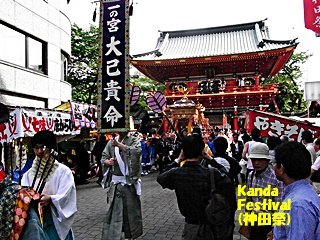

4)Sannou Festival
Used to be the one allowed to go into the Edo Castle on the way to move
around the large area between Akasaka and Nihonbashi, but now it is only
same as Kanda Festival in June of the even year, using mainly Mikoshi.
4)山王祭り
日枝神社が徳川家縁とされ、昔は江戸城内に入り、将軍上覧のものだったようだが、現在は
山車も交通の関係で廃止となり、神田祭りと隔年交互の催しとなり、6月中旬に神田祭と似た
神輿での催しとなっている。
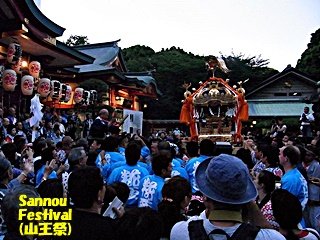
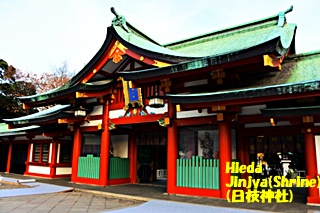
As above, Kanda and Sannou festival were more supported by Edo Govenment and
Tokugawea family and Fukagawa and Sansha festival were rather public oriented
ones in the past, However, now all of the festivals are important factor of
"Edo's flavor" kept in the modern Tokyo.
Festival are held once a year and only a few days therefore it is extremely
difficult to be there at festival time, but I would like to suggest that you
visit the shrines which may show the records and pictures of festivals and
apart from festivals, shrines themselves are the essence of Japanese culture
through our history.
以上、神田祭りと山王祭りは歴史的に”官製”、徳川幕府・江戸城との絡みがあり、
一方の深川と三社祭りは、どちらかというと、庶民的な祭りだったようだが、
現在ではいずれも東京で江戸の香りを残す、貴重な祭りとなっている。
尚、祭りは隔年だったり、年にほんの数日の催しなので、実際に現場に出くわすのは
難しいと思いますが、それぞれの神社は祭りとは別に、訪問されて一部は祭りの様子が
展示されていたり、神社の佇まいで祭りを想像して頂ければ、日本文化の歴史と現在を
ご理解頂けるかと思います。